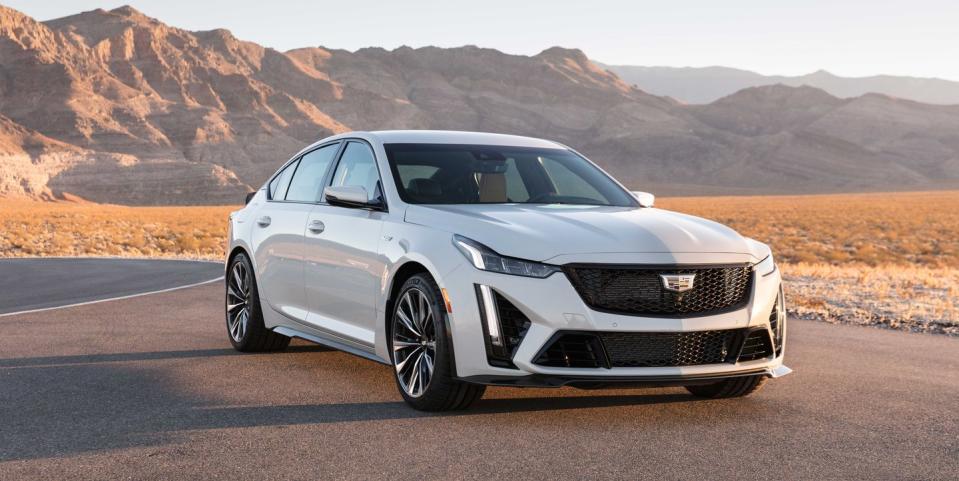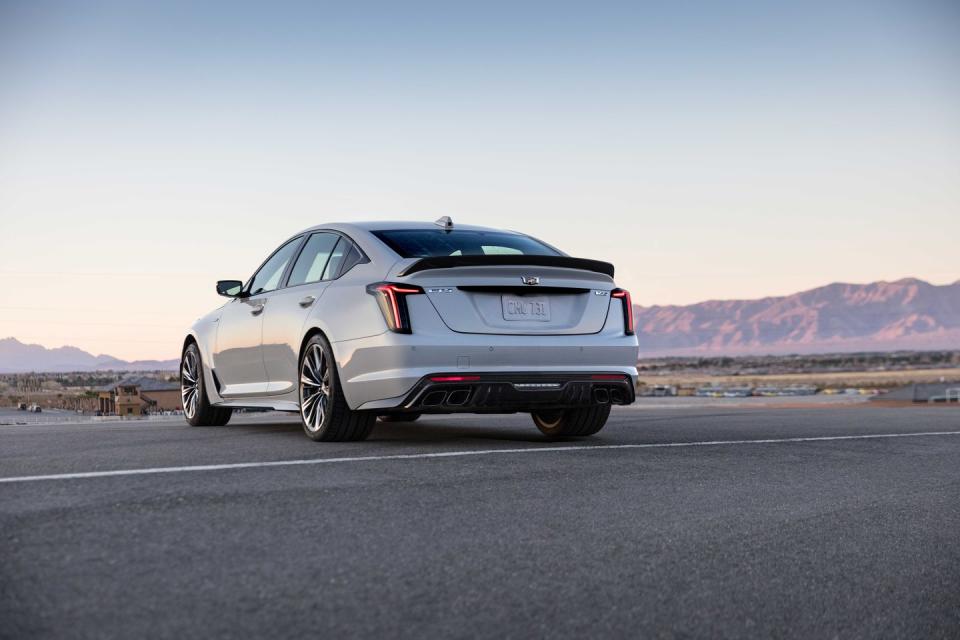Cadillac Is Going Electric—but Its Performance Won't Be Boring

Cadillac will stick with performance-minded vehicles even though the company is transitioning away from internal combustion power.
Simulated development helps in creating the next-generation high-performance Cadillac models, which are already being tested.
Cadillac Executive Chief Engineer Brandon Vivian says “there will be varying levels of Cadillac performance in the future.”
The crested brand from America’s mitten has come a long way from the days of the Catera. The decades-in-the-making transformation of General Motors’ most premium brand into a performance powerhouse with the luxury chops to take on the best Germans is complete. The CT4-V Blackwing and CT5-V Blackwing signify a high water mark for Cadillac. GM has invested a lot of time, money, and engineering talent in this Caddy turnaround, just in time for the brand to throw most of it in the trash and reinvent itself yet again.
For two generations of product Cadillac really only offered a single performance variant in the mid-sized CTS-V. It was decent enough, but competition from overseas offered multiple sizes of performance sedan, and in multiple levels of intensity. Yeah, Audi makes an RS4 and an RS6, but they also build S versions a step below the most hardcore, likewise BMW and Mercedes. In an effort to match wits with its German competitors, Cadillac figured out that it needed to offer more than just the CTS and in its previous generation introduced the ATS-V.
Cadillac Executive Chief Engineer, Brandon Vivian: “We raced, we’ve always raced. We believe that racing makes our street cars better. [The features on our V-series Blackwing cars are] the same features we have on our race cars. We’re very adamant about two-way transfer. As we’ve matured the V-series brand and you look in the marketplace and you see there are mid-level performance vehicles and ultra-high performance vehicles. And we felt that it was time for us to play and win in both spaces. We don’t produce cars that we don’t believe are winning.”
With the switch to a second-generation Alpha chassis, Cadillac revamped its strategy and naming scheme. CTS and ATS became CT5 and CT4, that’s easy. The V name, however, was given its own chop up. Where it was once the top dog, Cadillac has demoted V to mid-level manager and installed Blackwing as the new big daddy of Caddy. Of course Blackwing was previously the name of a special dual-overhead cam V8 developed for the CT6-V before that whole chassis was scrapped and the engine went with it. That’s as clear as mud, right?
Vivian continues, “So the philosophy that we have is not going to just be applied to what we do with ICE vehicles. The mode that powers the vehicle is independent of our philosophy as a brand and how we approach developing the overall vehicle performance envelope. It’s of course a statement for us as General Motors being zero zero zero: zero emissions, zero congestion, zero crashes, that’s our vision as a company. Cadillac is rightfully so at the tip of the spear for that.
“We believe if you look at the history, Cadillac’s prominence has always been innovation. We’ve always been innovative. Things that we’ve done recently with Super Cruise, performance that’s in these cars, the level of craftsmanship in balance with the level of performance. We showed you all the 3D printing that we’re doing. This is the first car that has 3D printed parts in production. That type of approach is what we’re going to use going forward, independent of the fact that we are going electric.”
So now that Cadillac has spent decades and millions to define V and Blackwing as two tiers of American performance luxury, surely these valuable brands will be carried on into the company’s electric future. It would make too much sense for Cadillac to offer a more measured and understandable version of its electric performance goals than Performance and Plaid. To translate these performance variants to future EVs like the upcoming Lyriq, Cadillac’s V engineers would need to focus on chassis, suspension, and aerodynamic advancements.

“Now electric enables us to meet our vision as a company, and that is the next frontier for innovation and we want to be at the front of that. That doesn’t change the mission of what Cadillac performance will be. There will be varying levels of Cadillac performance in the future,” says Vivian.
Cadillac takes a holistic approach to the V series cars, and particularly the Blackwing HiPo machines, so which aspects of these current cars are going to make it into the next-generation V and Blackwing electrics? Clearly the performance arm isn’t going anywhere, as evidenced by Vivian’s statements here. Cadillac V can apply what it knows about chassis development, aerodynamics, and cooling to whatever comes next.
Vivian, again; “If you think about the amount of work and the detailed analysis that we did to develop the structure. That same exercise, that same approach that we’re using analytically on how we make the car stiffer in the right areas, not just stiffer to be stiffer, but stiffer in the right areas. If you make the car really stiff, you’re adding mass that the car doesn’t really need. So those techniques, we’ll be using going forward.
“If you look at an electric vehicle, its configuration is different. You’re carrying a lot of mass in the middle of the car down low, and you have the suspension in the front and rear compartments that hang off of that mass. That is different from a floor pan that is typically open. So the structural problems that you’re solving are different, but the techniques of how we apply stiffnesses and where they are are the same. That’s one example.

 Yahoo Autos
Yahoo Autos 